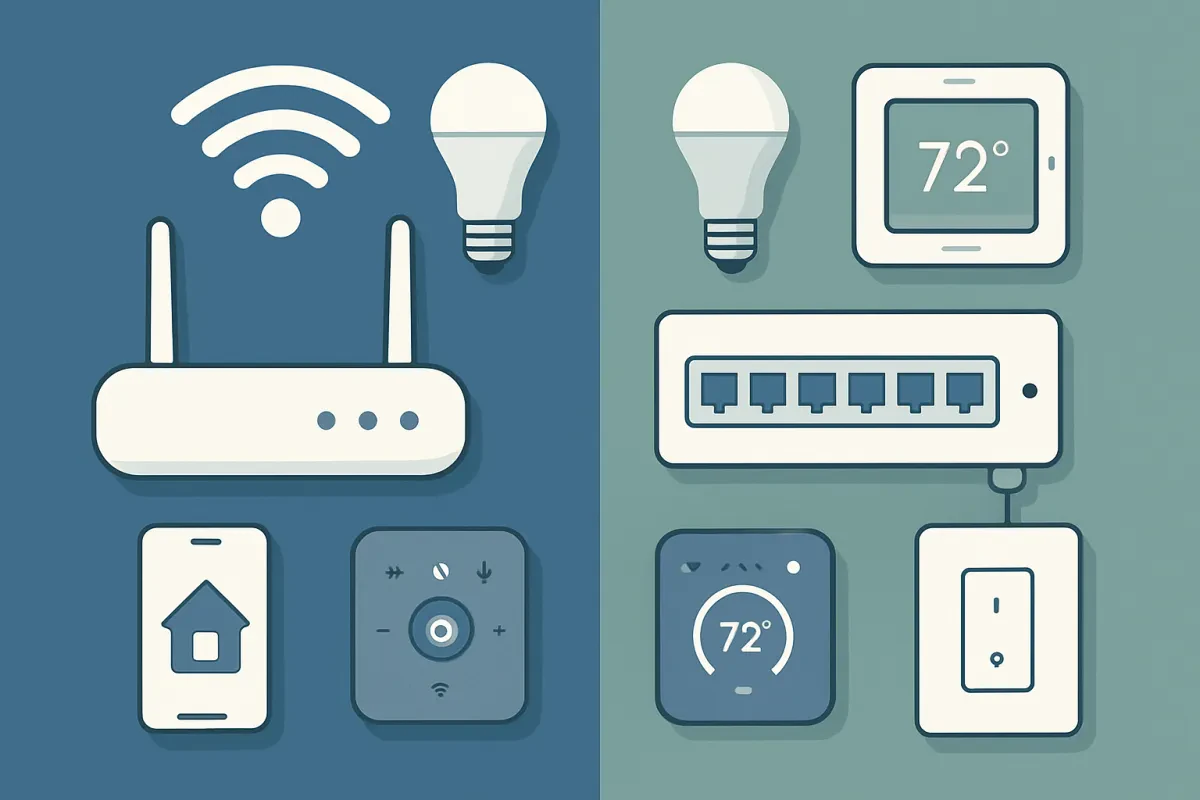When it comes to home automation, understanding the different connection options is vital. Wifi devices are particularly popular because they’re easy to set up and don’t require running wires through your walls. Just plug in your smart device, connect it to your home network, and you’re good to go.
One of the biggest perks of Wifi home automation is flexibility. You can control your devices from anywhere using your smartphone. Whether you’re on the couch or halfway around the world, you can check in on your smart thermostat or turn off that lamp you forgot about. Plus, with most modern devices, you can also use voice commands through smart assistants.
However, Wifi devices can sometimes struggle with connectivity. If your router is far away or there are a lot of walls in the way, you might notice some lag or connection issues. It’s a good idea to check if your home has dead zones where Wifi is weak. In those cases, a range extender may help, or you might want to consider wired options for more consistent performance.
Another point to keep in mind is security. While many Wifi devices have robust encryption, they can still be vulnerable to hacking if your network isn’t secure. Make sure your router has a strong password and consider setting up a guest network for your smart devices to minimize risks.
In short, Wifi home automation offers convenience and flexibility, making it a popular choice for many homeowners. Just be aware of your home’s layout and security measures to ensure a smooth, secure experience with your smart devices!
Benefits of Wired Home Automation Systems
When it comes to home automation, wired systems have some solid advantages that make them worth considering. One of the biggest perks is reliability. With a wired connection, you don’t have to worry about dropped signals or slow Wi-Fi. Your devices communicate seamlessly, so everything runs smoothly, whether it’s your smart lights or security cameras.
Another benefit is speed. Wired systems typically offer faster data transfer than wireless. This means that when you hit a switch or send a command, there’s minimal lag. If you’re someone who hates waiting for things to respond, a wired system might just be your new best friend.
Security is also a top concern for many homeowners. Wired systems provide an added layer of protection since there’s no risk of someone accessing your network over Wi-Fi. Less vulnerability means you can have peace of mind knowing your home is safe from potential hacks.
Plus, installation might be easier in the long run. Once everything is set up, you can generally expect fewer maintenance headaches. Unlike wireless setups that may require frequent adjustments or troubleshooting, a wired system tends to stay reliable once it’s up and running.
Key Differences Between Wifi and Wired
When choosing between WiFi and wired connections for your home automation devices, it’s important to understand how they differ. Each option has its pros and cons that can affect your daily use and overall experience. Let’s break down some key differences.
Speed and Reliability: Wired connections generally offer faster speeds and more stable performance. If you have several devices running at once, a wired setup helps ensure they won’t interfere with each other. On the other hand, WiFi can suffer from interference, especially if you have a lot of walls or other electronic devices around.
Installation and Flexibility: Setting up WiFi devices is usually a breeze—just connect to your network, and you’re good to go. This makes it easier to add or move devices around the house. With wired devices, you’ll need to consider where to run cables, which can be more time-consuming and may involve drilling or other modifications.
Security: Wired connections tend to be more secure compared to WiFi. It’s harder for someone to access a device that’s physically connected to your network. WiFi can be vulnerable to hacking if not secured properly. That said, updating your WiFi password regularly can help improve security.
Cost: Generally, wired devices might have a higher upfront cost due to installation and materials. WiFi devices, while sometimes cheaper initially, can lead to additional costs in the long run if you need to upgrade your router or enhance your network coverage.
Choosing the Right Setup for You
When it comes to setting up your home automation devices, choosing between WiFi and wired options can feel a bit overwhelming. Each option has its own perks and downsides, which is why it’s important to think about what you need most. Let’s break it down to help you make the best choice for your home.
If you go for WiFi devices, you’ll love that they’re easy to install and can be placed virtually anywhere. No messy cables to deal with means a cleaner look, and you can control them right from your smartphone. If you have a solid WiFi connection, you’ll generally enjoy seamless operation. Just keep in mind, interference from other electronic devices or thick walls can sometimes disrupt your WiFi signal.
On the flip side, wired devices are all about stability and reliability. They often offer faster response times and don’t get affected by WiFi dead zones or interference. If your home automation setup has a lot of devices or if you have a larger space, wired setups can create a more dependable network. However, installation might be more complicated and could involve running cables through walls.
Think about your lifestyle and what you value most. Do you want the flexibility of placing devices anywhere, or do you require quicker, more stable connections? If you’re just starting out, WiFi devices are great for dipping your toes into smart tech. But if you're a seasoned pro or have a large home, incorporating some wired options might be the way to go. No matter which route you choose, there’s a world of smart home possibilities just waiting for you!



